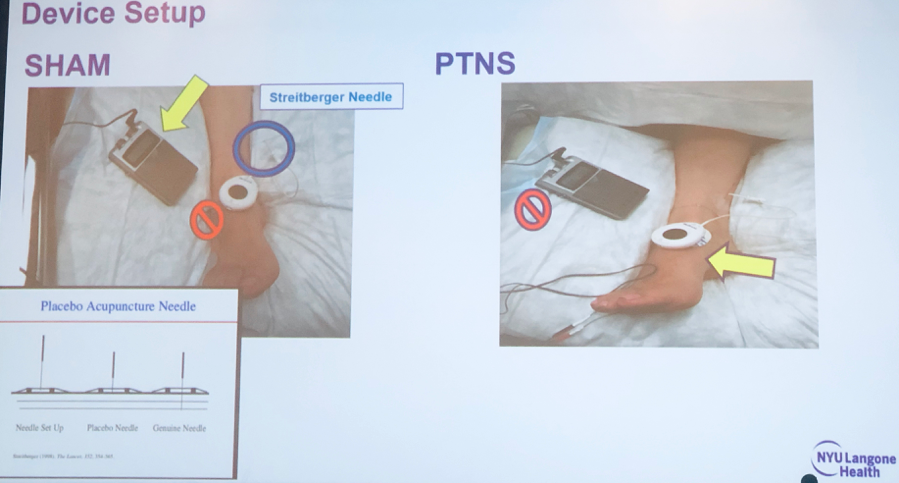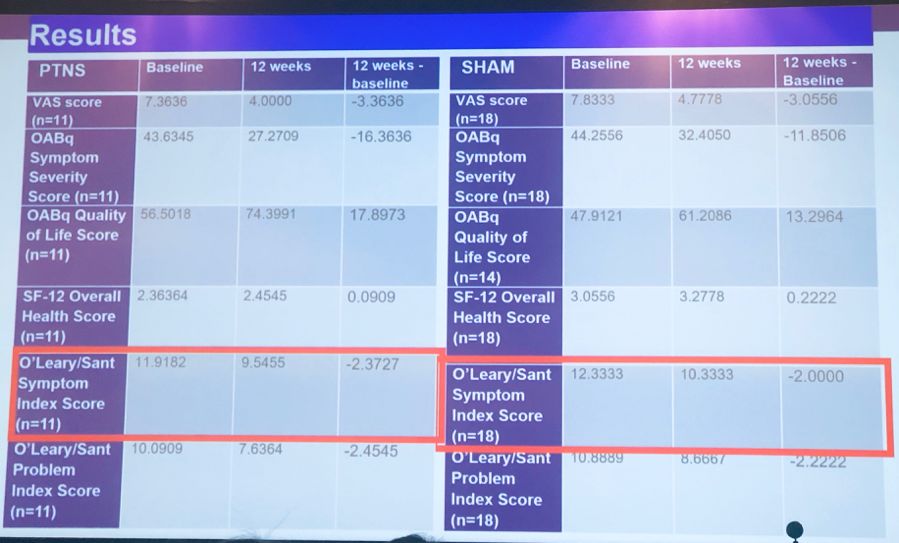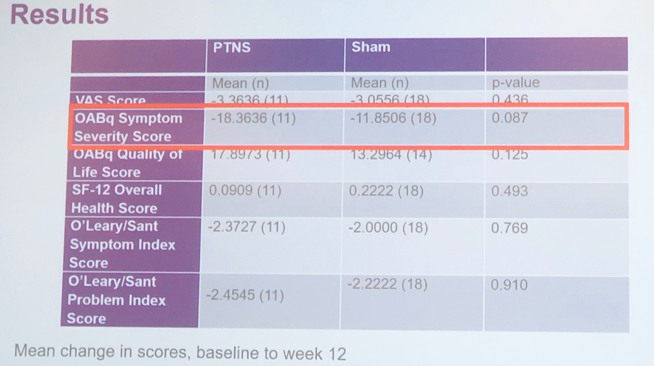PTNS vs sham effectiveness was evaluated for the fecal incontinence in the CONFIDeNT trial published in 2015. Subjects assigned to the true tibial stimulation group demonstrated a 50% greater decrease in the number of episodes per week compared to 31% of subjects who received sham device.
The main goal of the presented study was to assess the efficacy of PTNS vs. Sham in patients with IC/BPS. Adult women with VAS score of >5 were asked to stop analgesic medications and any electrical stimulation prior to the trial. Those who were pregnant, received Botox injection in pelvic floor muscle, had active injection, and/or any sacral modulation device were excluded from the study. Researchers utilized a device set up used in the SUmiT trial (Figure 1). Patients were blinded to the treatment assignment: all devices were covered during the therapy sessions.

Forty eligible subjects were recruited into the trial with 18 randomized to PTNS and 22 assigned to the sham device. Women in both groups received 12 weekly sessions.
PTNS group has demonstrated improvement on the Interstitial Cystitis Symptoms Index compared to the sham group (Figure 2).

There was no significant difference between the two groups in regards to the severity of urinary symptoms (Figure 3).

The clinical trial showed that PTNS could be a potential therapeutic option for women diagnosed with IC/BPS. Future studies are needed to assess the benefits of PTNS in certain subgroups of IC/BPS patients.
Presented by: Dominique Malacarne Pape, MD, NYU Langone Health
Co-authors: Dianne Glass, MD, Kimberly Ferrante, MD, Scott Smilen, MD, Nirit Rosenblum, MD, Victor W. Nitti, MD, Benjamin M. Brucker, MD, NYU Langone Health
Written by: Hanna Stambakio, BS, Clinical Research Coordinator, Division of Urology, University of Pennsylvania, Twitter: @AStambakio at the Society of Urodynamics, Female Pelvic Medicine & Urogenital Reconstruction Winter Meeting, SUFU 2019, February 26 - March 2, 2019, Miami, Florida


